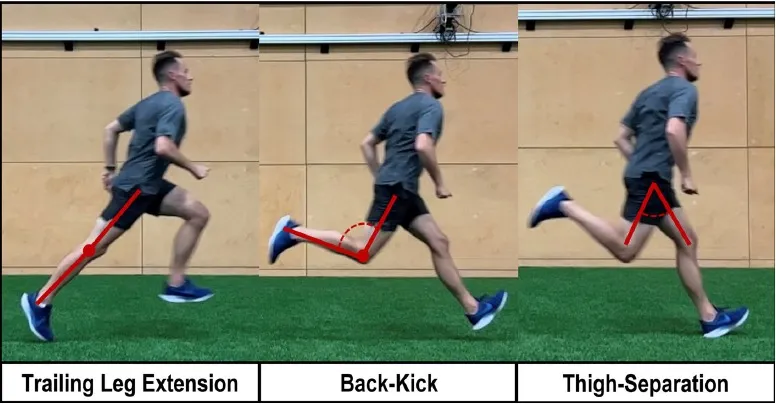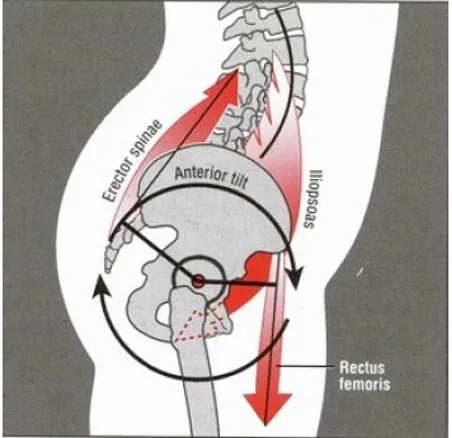The lower crossed syndrome
VOETBAL MEDISCH SYMPOSIUM 2020
DE BEHANDELING VAN VOETBALBLESSURES
PRAKTISCHE WETENSCHAP
OP DE KNVB CAMPUS IN ZEIST VINDT KOMEND JAAR OPNIEUW HET VOETBALMEDISCH SYMPOSIUM PLAATS.
HET SYMPOSIUM IS DÉ PLEK OM COLLEGA’S BINNEN HET VOETBALMEDISCHE DOMEIN TE ONTMOETEN OF KENNIS OP TE DOEN VAN GERENOMMEERDE EXPERTS. EN DIE NIEUWSTE INNOVATIES TE ZIEN OP HET GEBIED VAN VOETBALMEDISCHE EN FYSIEKE PRESTATIES.
NA VORIG JAAR DE DIAGNOSTIEK VAN VOETBALBLESSURES BELICHT TE HEBBEN, ROLT DE BAL DIT JAAR VERDER NAAR DE BEHANDELING VAN VOETBALBLESSURES. HET INHOUDELIJKE PROGRAMMA BIEDT OPNIEUW SPREKERS DIE ZICH ONDERSCHEIDEN IN ZOWEL DE DAGELIJKSE ZORG VOOR DE VOETBALLERS ALS OP WETENSCHAPPELIJK GEBIED.
VOETBAL MEDISCHE WORKSHOP 2020
(VELD)REVALIDATIE NA EEN VOETBALBLESSURE
OP 4 MAART ZAL ER WEDEROM EEN WORKSHOP PLAATS VINDEN BIJ HET KNVB VOETBAL MEDISCH CENTRUM.
OOK DIT JAAR BELOOFD HET EEN OCHTENDVULLEND PROGRAMMA TE ZIJN WAAR VOORNAMELIJK (SPORT)FYSIOTHERAPEUTEN HUN KENNIS MEE KUNNEN UITBREIDEN.
TIJDENS DE WORKSHOP ZAL MATT TABERNER ZIJN KENNIS EN EXPERTICE MET DE DEELNEMERS GAAN DELEN. MATT TABERNER IS EEN ERVAREN CLINICUS DIE AL JAREN EINDVERANTWOORDELIJK IS VOOR DE REVALIDATIE VAN TOPVOETBALLERS IN DE PREMIER LEAGUE. ZIJN FOCUS LIGT VOORNAMELIJK OP FYSIEKE ONTWIKKELING EN PRESTATIES. TEVENS IS HIJ DE ONTWIKKELAAR VAN HET ‘CONTROL-CHAOS CONTINUUM’.
DIT FRAMEWORK, WELKE VIJF FASES BESCHRIJFT HOE DE VELDREVALIDATIE NA EEN VOETBALBLESSURE OPGEBOUWD KAN WORDEN, STAAT CENTRAAL BINNEN DE WORKSHOP. DE THEORETISCHE ACHTERGROND,
DE TOEPASSING EN HET PRAKTISCHE ASPECT ZULLEN ALLEN AAN BOD KOMEN TIJDENS DE WORKSHOP.
reviews

Nick van der Horst
Meet the soccerdoc
Nick van der Horst behaalde zijn diploma fysiotherapie in 2007 aan de Hogeschool Utrecht. Hij werkte 10 jaar lang als sportfysiotherapeut/echografist/docent bij het Academie Instituut te Utrecht. Daarna heeft hij de overstap gemaakt naar waar zijn hart ligt, het professionele voetbal. Hij heeft twee jaar als sportfysiotherapeut en hoofd van de medische staf bij Go Ahead Eagles in Deventer gewerkt. Momenteel is is Nick werkzaam bij de KNVB. Zijn onderzoeks-activiteiten zijn gefocust op de voetbal-medische zorg. In 2017 behaalde hij zijn doctoraal na het verdedigen van zijn proefschrift ‘Prevention of hamstring injuries in male soccer’.

Blogger: Raúl Gómez
Have you heard of this syndrome before? Even if you’ve never heard of it, you probably see it every day without realizing that many of the players on your team or in your clinic develop this postural disorder. In this post, we will define what this syndrome is, why it occurs, what the risks are, and how it is related to our greatest enemy, the hamstring injury.
What is Lower Crossed Syndrome?
Lower Crossed Syndrome is a pattern of muscle imbalance involving the lumbar spine, pelvis, and hip. According to Das et al. (2017), this syndrome involves excessive tension in the hip flexors and lumbar extensors, along with weakness in the abdominal muscles and hip extensors. This pattern of movement primarily affects the L4-L5 and L5-S1 vertebral segments, the sacroiliac joint, and the hip joint.
The change in muscle activation of the lumbopelvic-hip complex will lead to postural disorders that may increase the risk of injury and low back pain. The main change is an increase in anterior pelvic tilt, which causes hip flexion and increased lumbar lordosis, resulting in an excessive curve in the lower back (Kritz & Cronin, 2008). Other postural changes that may occur include lateral alterations of the pelvis, lateral rotation of the leg, or hyperextension of the knees.
More common than we think in football players
Image 2. Rating scale: 5, ideal posture; 4, minor deviation; 3, significant deviation; 2, marked deviation; 1, severe deviation. (Kritz & Cronin, 2008)
Image 2 presents a study from 2008 by Kritz & Cronin, which demonstrated a tendency towards increased lumbar lordosis in athletes engaged in high-intensity running sports, such as football.
The study, involving 98 athletes, found that 33% of them exhibited marked or severe lumbar deviation during a static posture analysis. Authors like Das et al. (2017) have linked this type of postural imbalance to low back pain, while others, such as Mendiguchia et al. (2024),
have associated an increase in anterior pelvic tilt with greater elongation and strain in the hamstring muscle complex, leading to a higher risk of injury.
Football involves multiple explosive hip flexion movements, such as shooting the ball or passing, as well as short-duration, high-intensity actions like accelerations, decelerations, jumps, or changes of direction. These movements primarily stimulate the hip flexor and knee extensor muscles, leading to increased tension and overactivation of these muscle groups.
When one muscle contracts, the opposite or antagonist muscle relaxes. This is known as reciprocal inhibition. Excessively tight hip flexors will cause reciprocal inhibition of the gluteus maximus, the primary hip extensor (Buckthorpe, et al., 2019). This muscle activation pattern may cause excessive anterior pelvic tilt and, consequently, increase lumbar lordosis. In turn, the increase in lumbar lordosis will cause shortening and stiffness of the lower back muscles and reciprocal inhibition of the abdominal muscles (Image 3). Moreover, when the hip flexors become overactive, they start to take over functions that the abdominal muscles should perform. Again, this weakens the abdominal muscles and leads to the weakening and lengthening of the gluteus maximus due to their agonist-antagonist relationship (Das et al.,2017). Weakness in the gluteus maximus can lead to compensatory actions by secondary hip extensor muscles, such as the hamstrings and hip adductors, clinically known as “synergistic dominance” (Buckthorpe et al., 2019).
Image 3. Lower crossed syndrome (Source: www.erikdalton.com)
How does this syndrome impact maximal speed running?
During maximum-speed running, athletes who present this motor pattern may increase hip and rear leg extension to compensate for the lower activation of the gluteus maximus (Image 4, left). Increasing hip extension during the final stance phase allows the athlete to apply force over a longer time, resulting in a greater impulse (Kritz & Cronin, 2008). Although this may seem positive, it’s actually an ineffective force production strategy used to compensate for the lack of force during the first half of the stance phase, where the peak of ground reaction forces should occur (Bramah et al., 2023). Excessive hip extension lengthens the stance phase and reduces the flight time and the time available to reposition the lower limb for the next foot contact, increasing the speed of the leg change and, consequently, the strain produced on the hamstrings (Bramah et al., 2023). Hip hyperextension may also cause excessive anterior pelvic tilt, which increases stress on the proximal hamstring region during high-intensity running (Mendiguchia et al., 2021).

Image 4. Trailing leg extension (Bramah, et al., 2023)
Several authors, such as Schuermans et al. (2017), have shown how the increased activity of the hip flexors during sprinting increases the strain on the biceps femoris of the contralateral leg. This author also states that the activity of the abdominopelvic muscles, especially the gluteus maximus and abdominal obliques, reduces strain in the proximal region of this muscle. A proper balance of the lumbopelvic muscles, especially the relationship between iliopsoas-erector spinae and abdominal-gluteal muscles, is key to reducing strain on the biceps femoris (Mendiguchia et al., 2021).
This relationship once again highlights the importance of lumbopelvic control during maximum-intensity running. The increase in anterior pelvic tilt will cause a significant elongation of the hamstring muscles (Mendiguchia et al., 2024), which during high-intensity running increases the risk of suffering hamstring injuries (Mendiguchia et al., 2021).
Now that we understand the implications of this inefficient movement pattern, my next question is: How can we assess it and improve it?
We will address these questions in upcoming posts.
See you soon!
References
Bramah, C., Mendiguchia, J., Dos’Santos, T. & Morin, J., 2023. Exploring the role of sprint biomechanics in hamstring strain injuries: A current opinion on existing concepts and evidence. Sports Medicine, Volumen 54, pp. 783-793.
Buckthorpe, M., Stride, M. & Della Villa, F., 2019. Assessing and treating gluteus maximus weakness – A clinical commentary. The International Journal of Sports Physical Therapy, pp. 655-670.
Das, S. y otros, 2017. Prevalence of lower crossed syndrome in young adults: A cross sectional study. International Journal of Advanced Research, pp. 2217-2228.
Kritz, M. & Cronin, J., 2008. Static posture assessment screen of athletes: Benefits and considerations. Strength and Conditioning Journal, 30(5), pp. 18-27.
Mendiguchia, J. y otros, 2024. Anterior pelvic tilt increases hamstring strain and is a key factor to target for injury prevention and rehabilitation. Knee surgery, sports traumatology, arthroscopy , pp. 1-10.
Mendiguchia, J. y otros, 2021. Can we modify maximal speed running posture? Implications for performance and hamstring injury management. International Journal of Sports Physiology and Performance.
Neumann, D., 2010. Kinesiology of the musculoskeletal system. 2nd ed. Missouri: Mosby.



